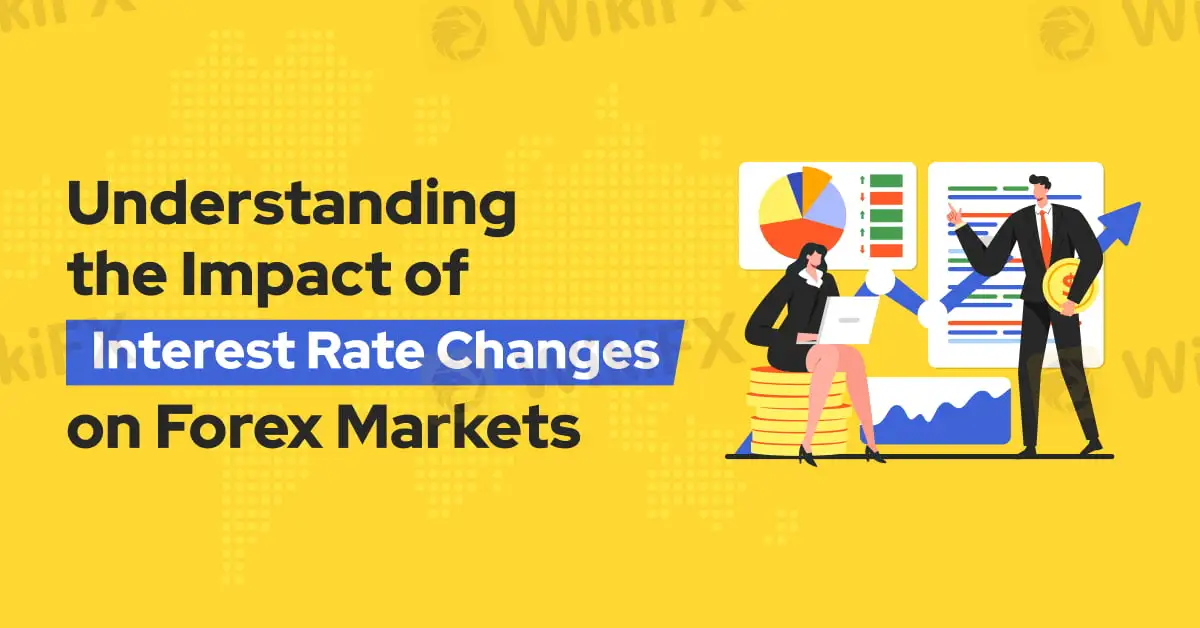简体中文
繁體中文
English
Pусский
日本語
ภาษาไทย
Tiếng Việt
Bahasa Indonesia
Español
हिन्दी
Filippiiniläinen
Français
Deutsch
Português
Türkçe
한국어
العربية
Understanding the Impact of Interest Rate Changes on Forex Markets
Abstract:Interest rates are one of the most influential factors in the forex market, shaping currency values and driving trader decisions. When central banks adjust interest rates, they send ripples through global markets. Understanding how these changes impact currency movements is crucial for forex traders aiming to stay ahead of market trends.

Interest rates are one of the most influential factors in the forex market, shaping currency values and driving trader decisions. When central banks adjust interest rates, they send ripples through global markets. Understanding how these changes impact currency movements is crucial for forex traders aiming to stay ahead of market trends.

What Happens When Interest Rates Rise?
When a central bank raises interest rates, it signals confidence in the economys health. Higher rates attract foreign investors seeking better returns on fixed-income assets like bonds. As demand for the local currency increases to purchase these assets, the currency typically strengthens.
For example, if the US Federal Reserve raises interest rates, the US dollar (USD) often appreciates against other currencies. Traders anticipate higher returns from US-based investments, increasing demand for USD. This scenario creates opportunities for traders to go long on the dollar against weaker currencies.
However, higher interest rates also raise borrowing costs, potentially slowing down consumer spending and business investment. Traders must assess whether the economic environment can sustain higher rates without stifling growth.
What Happens When Interest Rates Fall?
Conversely, when a central bank lowers interest rates, it usually aims to stimulate economic activity. Lower rates make borrowing cheaper, encouraging businesses to expand and consumers to spend. While this can support economic growth, it also tends to weaken the local currency.
Reduced interest rates decrease the appeal of a currency for foreign investors seeking high returns. For instance, if the European Central Bank (ECB) cuts rates, the euro (EUR) might depreciate against stronger currencies like the USD. Traders often use this as an opportunity to short-sell the euro in anticipation of further declines.
Additionally, lower rates can lead to higher inflation, eroding the currencys purchasing power over time. Forex traders must carefully monitor economic indicators such as inflation rates and GDP growth to gauge how a lower interest rate environment could evolve.
What Moves the Interest Rates?
Central bank announcements, economic data releases, and geopolitical developments play critical roles in shaping interest rate expectations. Tools like the economic calendar help traders track key events such as interest rate decisions, inflation reports, and employment data.
Traders often position themselves ahead of anticipated interest rate changes. For instance, if market analysts widely expect the Bank of England (BoE) to raise rates, the pound sterling (GBP) might strengthen even before the official announcement. This phenomenon, known as “pricing in,” underscores the importance of staying informed and reacting promptly to news.
Interest rate changes are a cornerstone of forex market dynamics. Rising rates generally strengthen a currency, while falling rates typically weaken it. However, traders must consider the broader economic context, as well as market sentiment, to fully understand how rate changes impact currency pairs.
For forex traders, staying informed about central bank policies and global economic trends is non-negotiable. By closely monitoring interest rate movements, traders can develop strategies that align with market conditions and make well-informed trading decisions.

Disclaimer:
The views in this article only represent the author's personal views, and do not constitute investment advice on this platform. This platform does not guarantee the accuracy, completeness and timeliness of the information in the article, and will not be liable for any loss caused by the use of or reliance on the information in the article.
Read more

Why Trade Agreements Matter to Nations
In today’s interconnected world, trade agreements serve as the foundation for stable and predictable international commerce.

Trade Fights Are Heating Up—What Happens Next?
Global financial markets have become increasingly reactive to even minor developments in international trade talks.

Juno Markets Upgrades to FYNXT PAMM
Juno Markets has successfully upgraded its managed account infrastructure by integrating FYNXT’s Percent Allocation Management Module (PAMM) system.

Italy’s CONSOB Blocks Sites of ITradingFX and NEX TRADE in Latest Crackdown
Italy’s Companies and Exchange Commission (CONSOB) has ordered Internet service providers to block access to nine unauthorized investment websites, including “ITradingFX” and “NEX TRADE,” as part of its ongoing effort to curb abusive financial services Consob.
WikiFX Broker
Latest News
Five UK Financial Firms Collapse, FSCS Offers Support for Affected Clients
Why Trade Agreements Matter to Nations
Non-Existent Online Scheme Took Away RM580,000
RM15 Million Gone in Fake Investment Scam
Crypto Traders Hit by Scam Using Fake Regulatory Documents, MFSA Cautions
Trade Fights Are Heating Up—What Happens Next?
Juno Markets Upgrades to FYNXT PAMM
Think Scams Won’t Happen to You? That’s Exactly What Scammers Count On
Beware of New Scam Tactics Lurking on WhatsApp!!
Italy’s CONSOB Blocks Sites of ITradingFX and NEX TRADE in Latest Crackdown
Currency Calculator


